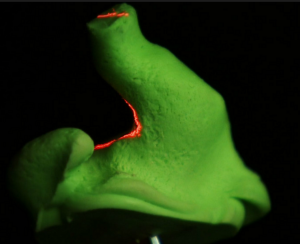What is 3D printing?
We’ve all heard about 3D and understand the concept of 3 dimensional (3D) viewing but how does that translate into 3D printing?
3D printing is a process of making three dimensional solid objects from a digital file (picture). The descriptive term for 3D printing is “Additive Manufacturing” which gives us a visual clue as to the process behind 3D printing. The object is actually created through a layering process utilizing specialized 3D scanners and 3D printers.
How does the 3D Printing Process work?
The first step is to create a virtual design or blueprint of the object you want to create. This can be created using a 3D modeling program in a CAD (Computer Aided Design) An existing object can be copied with the use of a 3D scanner. This technology is being used by many technology companies such as Microsoft and Google who have developing hardware to perform 3D scanning. Microsoft’s Kinect is an example of what the future may hold for smartphones and other hand-held devices having integrated 3D scanners. In the very near future this digitalization of real objects into 3D models will be performed as easily as taking a picture on your smart phone is now.
The 3D printing software “slices” the final model into hundreds or even thousands of layers several microns thick in preparation for printing
The second step to the process is sending the finished design to the 3D Printer where the received data is now recreated by bonding very thin layers of resin together into a finished object. There are several different methods and materials used in 3D printing depending upon the object neede d to be manufactured but the one similarity is the use of a layering process.[1]
d to be manufactured but the one similarity is the use of a layering process.[1]
Depending upon your desired finished product there are several options or types of 3D printing. Some involve heating and solidifying granular material by laser technology with each slice in the needed pattern. This is repeated over and over again with each patterned layer bonding to the previous layer as it cools. Other 3D printers will spool out or deposit material much like an automated glue gun while others use UV light to cure layers of resin.
How does Custom Protect Ear (CPE) utilize this 3D Technology to help your ears?
CPE is using this “cutting edge” technology (literally!) to compliment their existing high quality custom hearing protection.
The digital 3D printing technology used by CPE creates an accurate and precise Hearing Protection Device (HPD). CPE utilizes DLP (Digital Light Processing) technology (the most precise in the market) through the EnvisionTEC ULTRA® 2 printer. The technology provides benefits both to the wearer and to the product development process:
- Quality in consistency during HPD modeling means accuracy and precision
- Quality Control during product implementation ensures proper fit for the wearer
- New designs can now be updated and printed in real time, improving implementation of new design developments.
The DLP technology allows for the ability to add more product features in ways which were not always possible before. For example, CPE can place an employee number or serial number of any size anywhere on the HPD, unlike being limited to the outer surface with traditional technology.
The traditional method of producing ear moulds includes manual physical cutting and grinding of the ear impressions to shape them close to the shape of the finished product. Plaster moulds are then created based on these impressions, and silicone is placed into the prepared moulds.
The final quality performance check (ensuring the HPD is accurate and precise) is completed when the original impression and the new 3D model are overlayed on screen Following this, the moulds are printed in the digital 3D printer. The final HPD is obtained by pouring silicone material into the mould.
The 3D Approach

CPE has been using this new 3D approach for almost 3.5 years integrating it with their already custom design method of producing ear moulds for dB Blockers, dB Com and dB Life products. The ability to create complex objects is revolutionizing the manufacturing industry and improving quality and consistency in products produced using this 3D technology.
JUST MORE PROOF THAT CPE IS COMMITTED TO THEIR CUSTOMERS WITH ONGOING RESEARCH AND TECHNOLOGY IN THEIR BEST PRACTICES.
~ by Howard Raphael
CEO Custom Protect Ear
[1] http://3dprinting.com/what-is-3d-printing/